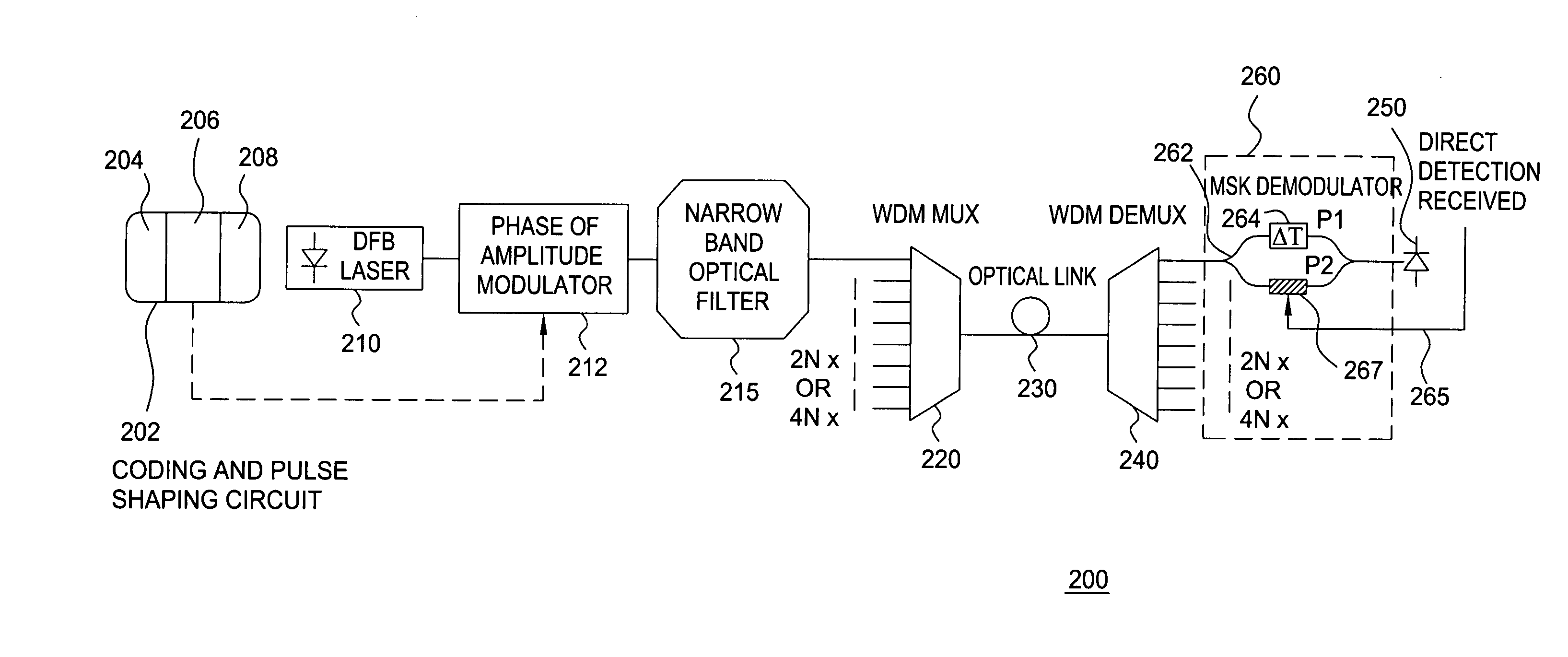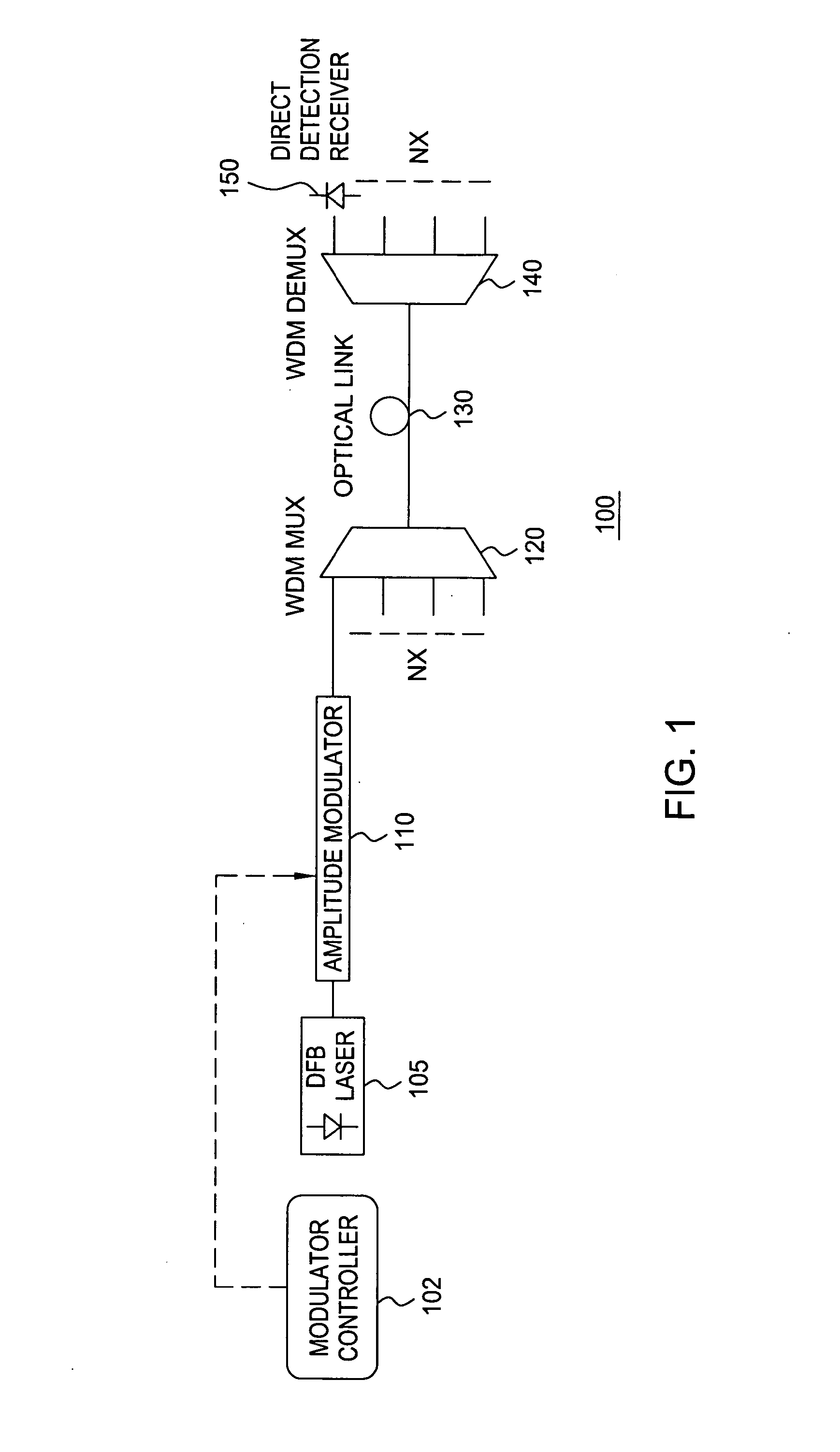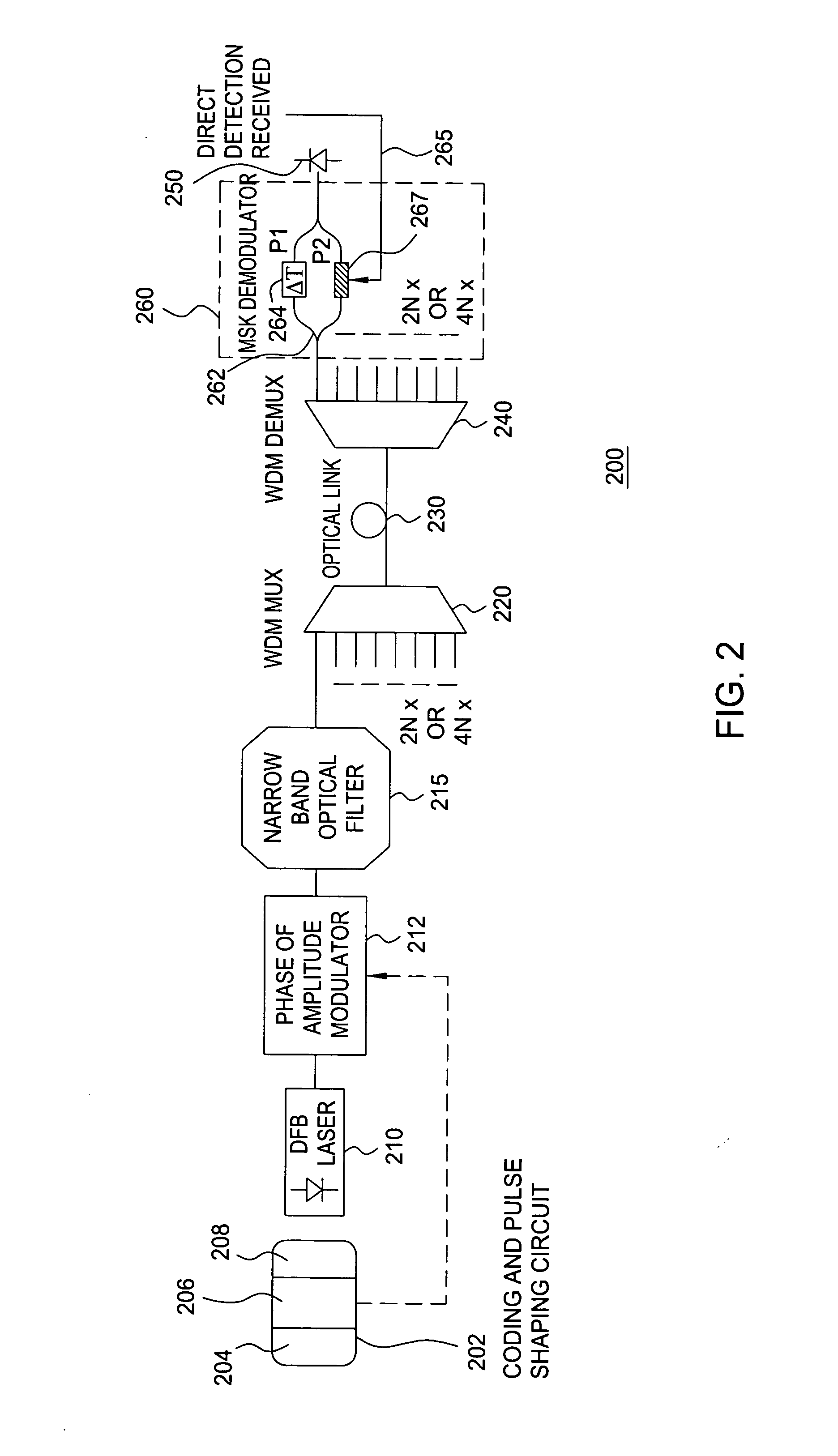Method and system for increasing the spectral efficiency of binary coded digital signals
a binary coded digital signal and spectral efficiency technology, applied in the field of communication systems, can solve the problems of reducing the aggregate data rate presently achievable in conventional optical transmission systems, the amount of separation between adjacent channels is sufficient to reduce cross-channel interference to acceptable levels, and the spectral efficiency of binary coded digital signals cannot be improved. , to achieve the effect of limiting optical signal distortion and improving the spectral efficiency of binary coded digital signals
- Summary
- Abstract
- Description
- Claims
- Application Information
AI Technical Summary
Benefits of technology
Problems solved by technology
Method used
Image
Examples
Embodiment Construction
[0015] The present invention advantageously provides a method and system for improving the spectral efficiency of a binary coded digital signal, while contemporaneously limiting distortion of the optical signal induced by optical nonlinear effects during transmission. Although various embodiments of the present invention are described herein with respect to dense wavelength division multiplexing (DWDM) transmission systems, the specific embodiments of the present invention should not be treated as limiting the scope of the invention. It will be appreciated by those skilled in the art and informed by the teachings of the present invention that the method and system of the present invention may be advantageously implemented in various other transmission systems, such as single channel transmission systems and the like.
[0016]FIG. 1 depicts a high level block diagram of a conventional DWDM transmission system. The conventional DWDM transmission system 100 of FIG. 1 comprises a modulato...
PUM
 Login to View More
Login to View More Abstract
Description
Claims
Application Information
 Login to View More
Login to View More - R&D
- Intellectual Property
- Life Sciences
- Materials
- Tech Scout
- Unparalleled Data Quality
- Higher Quality Content
- 60% Fewer Hallucinations
Browse by: Latest US Patents, China's latest patents, Technical Efficacy Thesaurus, Application Domain, Technology Topic, Popular Technical Reports.
© 2025 PatSnap. All rights reserved.Legal|Privacy policy|Modern Slavery Act Transparency Statement|Sitemap|About US| Contact US: help@patsnap.com



